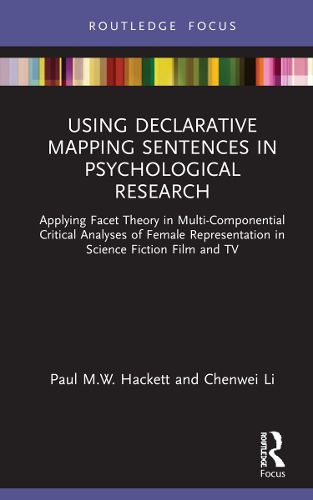Readings Newsletter
Become a Readings Member to make your shopping experience even easier.
Sign in or sign up for free!
You’re not far away from qualifying for FREE standard shipping within Australia
You’ve qualified for FREE standard shipping within Australia
The cart is loading…






Using facet theory and Hackett's pioneering development of the declarative mapping sentence (DMS) as a qualitative methodology, this volume explains the process of formulating and applying the DMS to critically assess female representation in science fiction.
Using a comparative approach to the development of female roles in Western science fiction films and television, the authors illustrate how the DMS is formulated and used to analyse the psychological and behavioral profiles of female characters. By maintaining the common structure of the DMS across films while adapting its content for each female role, the text demonstrates the flexibility of the DMS in providing a structure for varied research domains, enabling results to be uniformly compared, contrasted and classified.
This insightful and thought-provoking volume will appeal to researchers, academics and educators interested in psychological methods and statistics, qualitative research in gender identity, and research methods more generally. Those especially interested in behavioural psychology, gender and cinema, and science fiction will also benefit from this volume.
$9.00 standard shipping within Australia
FREE standard shipping within Australia for orders over $100.00
Express & International shipping calculated at checkout
Stock availability can be subject to change without notice. We recommend calling the shop or contacting our online team to check availability of low stock items. Please see our Shopping Online page for more details.
Using facet theory and Hackett's pioneering development of the declarative mapping sentence (DMS) as a qualitative methodology, this volume explains the process of formulating and applying the DMS to critically assess female representation in science fiction.
Using a comparative approach to the development of female roles in Western science fiction films and television, the authors illustrate how the DMS is formulated and used to analyse the psychological and behavioral profiles of female characters. By maintaining the common structure of the DMS across films while adapting its content for each female role, the text demonstrates the flexibility of the DMS in providing a structure for varied research domains, enabling results to be uniformly compared, contrasted and classified.
This insightful and thought-provoking volume will appeal to researchers, academics and educators interested in psychological methods and statistics, qualitative research in gender identity, and research methods more generally. Those especially interested in behavioural psychology, gender and cinema, and science fiction will also benefit from this volume.